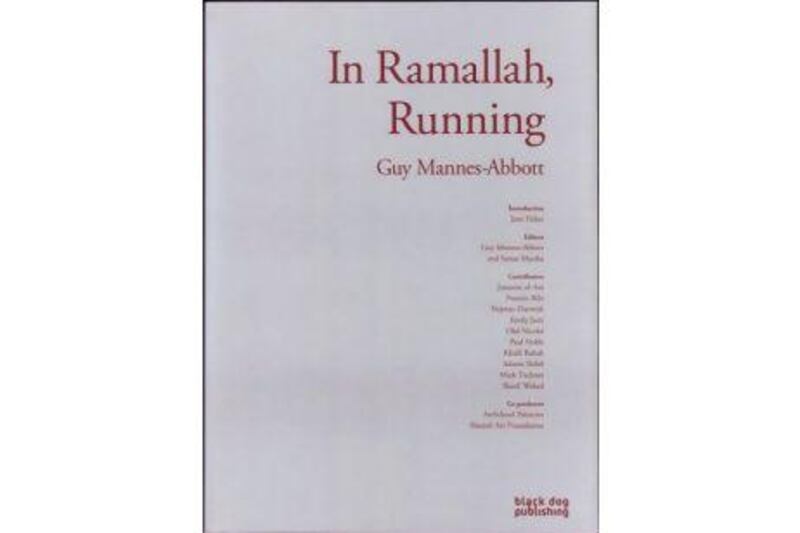Running tests boundaries - both those we place on ourselves as well as those imposed upon us by the outside world. Whether those external limits are social, cultural or political, the runner collides with them in a way that the casual pedestrian does not, thus serving as a mirror for the issues that affect one's time and space.
A woman in a male-dominated society, for example, might face cat calls or even physical assault while running; Palestinians living under Israeli occupation have, literally, nowhere to run. Trapped inside a labyrinth of Israeli military checkpoints and permits, bordered by illegal settlements, freedom of movement is nonexistent.
In Ramallah,Running is a collection of prose and visual art that expresses how one moves through - or doesn't move through - occupied space. Edited by Samar Martha, the co-founder of ArtSchool Palestine, and the London-based writer Guy Mannes-Abbott, the book brings together prominent Palestinian artists and writers as well as several from the international stage.
They offer reflections on Ramallah, the city that has become the de facto centre of Palestinian cultural and political life. As contributor Najwan Darwish writes in his powerful essay Ramallah Versus Ramallah, the focus on Ramallah as a "temporary capital" is "meant not only to make us forget Jaffa, Haifa, Acre, the Galilee and all of Palestine that was occupied in 1948, but also to overshadow the importance of Jerusalem".
Mannes-Abbott's contribution is a 14-part series about his runs and walks in Ramallah. His descriptions can border on the lyrical - rendering the beauty of the land and his love for the place and its people. But they are also laden with the claustrophobia and fear that typify Palestinian life: "... in the prison of these hills, in lovely Ramallah itself, there is no freedom. Here, in this place, life spirals within abysmal limits."
His essay reveals the physical limitations imposed by the Israeli occupation; more importantly, Mannes-Abbott points to how those restrictions linger inside the psyche, long after one has entered the so-called "autonomous" areas. But his depiction of Palestinians is also almost too sympathetic. One villager is "comically, sweetly" emphatic, another's voice "betrays a sweetness of character that is very Palestinian".
As a foreigner who can easily leave Ramallah and its suffocating environs behind, Mannes-Abbott spends a little too much time on stage. There are less than 150 pages of prose and art in the book and his essay - while moving, nuanced and deeply researched - takes up more than 70. In Ramallah, Running is at its best when those whose very existence is intertwined with dispossession and occupation - the Palestinians - speak for themselves.
Khalil Rabah, a Palestinian artist who lives in Ramallah, presents the reader with a simple image: a photograph of two worn leather loafers. At first glance, the brain interprets it as a pair of shoes. But something is amiss. It is actually two right shoes. It is, perhaps, the perfect metaphor for Ramallah. The shoes are shiny and seem business-like - just like the city, which is awash with foreign aid and seems to be booming - but the person who wears them is cobbled; if they manage to run, they won't get far.











